Table of contents
- Brief overview of Ayodhya
- Significance of Ayodhya in Indian culture and history
- Introduction to the Ayodhya dispute
- Ancient history of Ayodhya
- Construction of the Babri Masjid
- Historical background of Ayodhaya
- Beginning of dispute
- Demolition of Babri Masjid
- The Demolition and its Aftermath
- Post2020 Developments:
- Ayodhya Ram Mandir’s Glorious Opening
- Looking Ahead
Brief overview of Ayodhya
Nestled in Uttar Pradesh, India, Ayodhya is like a living storybook filled with ancient tales. It’s not just a city; it’s a special place where the heart of Hinduism beats. Imagine it as the hometown of Lord Rama, the hero of the Ramayana. Ayodhya is more than just a city; it’s a safe haven for people who deeply believe.
For Hindus, Ayodhya is one of the most special cities, placed along the banks of the Saryu River, about 135 km away from Lucknow. They call it Saket and remember it as the capital of the Hindu kingdom of Kosala. It has a rich history, even embracing Buddhism.
Ayodhya isn’t just a place; it’s where stories, faith, and history come alive. It’s emotional, like a sanctuary for millions who find solace in its embrace.
Significance of Ayodhya in Indian culture and history
Ayodhya, a gem of India cherished in millions is most precious to the heart. It’s a radiant star with multifaceted brilliance:

Religious Significance:
1. Rama’s Birthplace: Ayodhya is regarded as the sacred place where Lord Rama, a divine personage who was much loved, drew his first breath. This grants it a unique holiness.
2. Pilgrimage City: journeys to Ayodhya are aimed at refreshing the souls in Sarayu River, a river with spiritual connotations which washes away sins. Worshippers visit places like the developing Ram Janmabhoomi, for a divine encounter.
3. Festivals Galore: Ayodhya is alive with the cacophony of music, blinking lights and merry making during exuberant celebrations such as Dussehra , Diwali or Ram Navami.
Historical Importance:
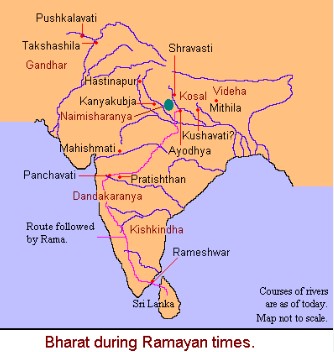
1. Ancient City: Ayodhya’s roots reach back thousands of years, when it was the seat for Kosala kingdom and center point in terms of trade culture.
2. Archaeological Finds: Discovered treasures such as pottery, statues and ancient city walls provide a glimpse into Ayodhya’s historical fabric.
Cultural Tapestry:
1. Art and Music: Ayodhya’s cultural richness is seen in traditional Ramlila performances, soul touching bhajans and intricate architecture.
2. Food and Fun: Ayodhya offers an insight into Indian life with its delicious street food and busy markets.
Introduction to the Ayodhya dispute
Ayodhya is a city located deep within the heart of India that was acknowledged as Lord Rama’s birth place, an extraordinarily significant figure in Hinduism. Yet enclosed within its holy land is a twisted tale of war. In this same soil stood the Babri Masjid, a mosque famously occupied by Muslims since time immemorial. However, Hindus claimed an ancient temple to Rama lay underneath, and this dispute went on for decades.
In 1992, tensions boiled over. The Babri Masjid was torn down by Hindu mobs that touched off civil unrest throughout India and caused lasting wounds to the nation’s social texture. A series of legal battles followed, the result being a 2019 Supreme Court decision that was landmark. After the controversial land was given, for construction of a grand Ram temple there was another piece dedicated to build new mosque.
This decision finally put an end to the legal drama, but unfortunately people’s hearts still hurt. However, a faint hope for reconciliation still shines. Both communities are beginning to restore their places of worship, bearing the burden of history. Do these holy places turn into not only emblems of religion but also unions? It remains to be seen whether Ayodhya’s contested past can provide a path for more peaceful future times.
Ancient history of Ayodhya
Ayodhya, which some consider to be deep within India’s heart, is the city where Lord Rama was born. He is a beloved Hindu god But hidden in its sanctified soil is a knotted history of war. However, on this selfsame ground stood the Babri Masjid a mosque for which Muslims claimed to have built centuries ago. On the one hand, however, Hindus believed that there was an ancient Rama temple below which led to a decades longdispute.
Ayodhya, on the bank of holy river Sarayu is reverberant with ancient epics and timehonored faith. With high respect as a birthplace of Lord Rama, it elevates to above a city being the holy sanctuary for millions.
1. Ayodhya in the Tapestry of Ancient Scriptures:
Ramayana: Ayodhya is the capital of Kosala where Valmiki’s epic depicts it to be a lively place for Rama’ birth. This city faces for the thriving palaces, green gardens and flourishing trade.
Rigveda: Ayodhya appears here as a thriving colony held by the Ikshvaku dynasty, which is an indication of its early value.
2.Unveiling Ayodhya’s Sacred Legacy:
Pilgrimage Center: For generations, Ayodhya has been worshipped by Hindu pilgrims in search of spiritual protection. Rituals include bathing in the cleansing River Sarayu and visiting sanctums devoted to Rama and other gods.
Temple Treasures: From the ancient wonder Kanak Bhavan to modern day glamour of Ram Janmabhoomi temple, Ayodhya is home to a sprawling range of holy places.
Festive Tapestry: Ayodhya is associated with a glorious past because of such vibrant festivals like Ram Navami, Dussehra and Diwali.
Stepping into the pages of ancient manuscripts and visiting its holy places is a window that opens for us in Ayodhya’s glorious past. Ayodhya’s story continues from its humble origins in prosperity to continued prominence as a holy city.
Construction of the Babri Masjid
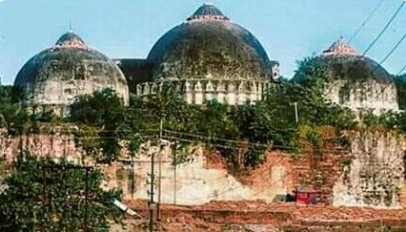
Background: The commonly attributed construction date of the Babri Masjid, or “Babur’s Mosque,” is 1528 and was purportedly ordered by Great Mughal Emperor Babir and carried out under Mir Baqi.
Historical Evidence: The claim became popular in 1813–14 following the East India Company Surveyor’s report of an engravement on mosque walls, that provided support to this belief. A local belief indicated that Aurangzeb constructed the mosque by razing down a temple for Rama.
Gap in Records: In other words, between 1528 and 1668 there is no textual record pointing out on the mosque’s presence. The earliest historical reference was recorded by Jai Singh II in annotation Contradictory Records: Baburnama, AiniAkbari and Ramcharitmanas by Tulsidas have no regard for the mosque building or temple demolition in Ayodhya.
Shared Worship: In the case of Hindus and Muslims both are said to have worshiped at a mosque temple, with Hindu inside the compound but outside the Mosque. In 1857, a British administrator put up a barricade to divide the places of worship and avoid conflicts.
Post-Independence Dispute: However, after the independence of India in 1949 an idol statue of Ram was put inside the mosque which resulted in a long-lasting controversy.
Historical background of Ayodhaya
- Gupta Period (600 BCE 11th Century CE):
- Ayodhya was formerly known as Saketa, and it is one of the largest cities in North India during Buddha’s time.
- The Gupta period saw it transformed into Ayodhya possibly the capital under Kumaragupta or Skandagupta.
- Kalidasa wrote Raghuvamsa in Ayodhya, referring to Gopratara tirtha (Guptar ghat), where Ram entered the sky.
- It sometime around 450 CE Rama temple was setup by Pravarasena II son of the exalted devotee.
- Gahadavala Period (11th Century CE):
- Gahadavalas, Vaishnavas revived Ayodhya in 11 th century building the temples of Vishnu possibly one at Rama’s birth place.
- The prominence of Rama in Vaishnavism increased Ayodhya as an important place for the pilgrimage.
- Mughal Period (1528 Onward):
- The mosque, Babri Masjid was constructed in 1528 under Mir Baqi’s command as per the records of an inscription.
- The disguised Babur visited Ayodhya and swore to build a mosque as he conquered Hindustan.
- In 1574 Tulsidas started writing Ramcharit Manas in Ayodhya but gave no mention of a mosque.
- Ayodhya was not mentioned as a mosque in European early accounts of the fifteenth century by William Finch.
- Late Mughal Period (18th Century):
- SahifaIChihil Nasaih Bahadur Shahi during the early 18th century made reference to mosques constructed on Hindu temples after demolition, including in Awadh (Ayodhy₪).
- In 1717, Jai Singh II were given land in Ayodhya to acknowledge the hereditary right of ownership vested on deity.
- During 17661771, Jesuit priest Joseph Tieffenthaler observed certain grey areas between Aurangzeb and Babur regarding the mosque construction.
Overall: Ayodhya has a long historical background from the Gupta to Mughal period with marked significant in religious and cultural implication. It is the building of Babri Masjid, as well as later historical events connected to Ayodhya’s heritage that complicates its history.
Beginning of dispute.
1855: The first instances of religious violence in Ayodhya occurred. Sunnis claimed that Bairagis of Hanumangarhi destroyed a mosque. Hindus attacked the Babri mosque in retaliation.
1946: Akhil Bharatiya Ramayana Mahasabha (ABRM), an offshoot of Hindu Mahasabha, initiated an agitation for site possession.
1949: Sant Digvijay Nath organized a recitation of Ramcharit Manas, and Hindu activists placed idols inside the Babri mosque. Idols were installed, leading to the belief of a miraculous appearance.
1950: Jawaharlal Nehru and Vallabhbhai Patel insisted on removing the idols, but Govind Ballabh Pant hesitated. The state took control under section 145 CrPC, allowing only Hindus to worship. The mosque became a de facto temple. Civil suits were filed by the Sunni Central Waqf Board and ABRM.
1964: Vishva Hindu Parishad (VHP) formed, aligning with the Gorakhnath wing of Hindu nationalism. Saffron politics united.
1984: VHP organized a procession in Ayodhya, seeking “liberation” of the site. The Ayodhya dispute evolved into a new phase.
Overall: The Ayodhya dispute, marked by violence in 1855, intensified in 1946 with ABRM’s agitation. The placing of idols in 1949 altered the dynamics, leading to legal battles. Saffron politics converged in 1964, setting the stage for intensified protests in 1984.
The Babri Masjid demolition was not simply a brickand mortar incident; it was an earthquake that shook the soul of India. In order to fully appreciate its significance, we need go back in time and look at those smoldering decades of the 1980s that culminated with December 6th; a date infamous as this day.
Demolition of Babri Masjid.

1. Seeds of Discord (1980-1992):
A dispute over a site claimed by both Hindus and Muslims, which had existed for centuries was deepened in the 1980’s. The Vishva Hindu Parishad (VHP) introduced a campaign to reclaim the site for a Ram temple and found an ideological platform in the new Bharatiya Janata Party In 1986, a court order permitting Hindus to worship in the Babri Masjid helped ignite kindling of movement.
2. Rath Yatra and Escalating Tensions (1986-1990):

The rath yatra movement of L. K. Advani in 1990, aimed at generating support for the cause through a chariot procession across India led to outbreaks of communal riots nationwide. The arrest of Advani, and a botched attempt by Sangh Parivar radicals to attack the mosque, exposed boiling resentment on both sides.

3. A Day that Shook India (December 6, 1992):
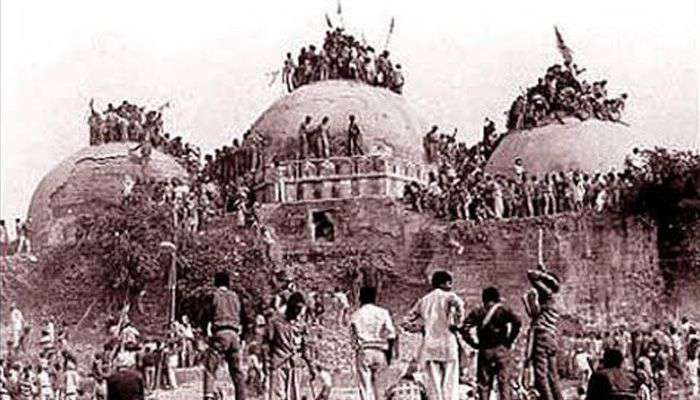
In December 6,1992 a rally organized by VHP and BJP attracted about one hundred fifty thousand kar sevaks (religious volunteers) to the Babri Masjid. In just hours, the mob overcame its outmanned security force and stormed whatever barriers were in place before knocking down the mosque. This bold expression of contempt led to communal riots all over India, killing more than two thousands.
4. Unmasking the Culprits (1992-2009):
The Liberhan Commission set up to probe the act held several big guns of BJP Vajpayee, Advani and Joshi along with UP chief minister Kalyan Singh and some VHP labels responsible. But accusations of provocationist speech that leads the scene went deeper into this wound.
Here are some news articles and resources for further exploration:
- The New York Times: https://www.nytimes.com/1992/12/07/world/hindumilitantsdestroymosquesettingoffanewcrisisinindia.html
- The BBC: https://www.bbc.com/news/worldasiaindia42106056
- The Indian Express: https://indianexpress.com/about/babrimasjiddemolition/
- The Ayodhya Dispute: https://ethics.berkeley.edu/conflictresolution
The Demolition and its Aftermath:
December 6, 1992: A large mob of kar sevaks organized by VHP and BJP demolishes the Babri Masjid, leading to nationwide communal violence and over 2,000 deaths.
December 16, 1992: Congress government sets up the Liberhan Commission to investigate the demolition.
2002: Godhra train attack in Gujarat exacerbates interfaith tensions.
2003: Archaeological Survey of India finds evidence of preexisting structures beneath the Babri Masjid, contested by Muslim groups.
2007: Supreme Court rejects a review petition on the Ayodhya dispute.
2009: Liberhan Commission submits its report, details remain concealed.
2010: Allahabad High Court divides the disputed land into three parts: one for Ram temple, one for Muslim community, and one for an unknown entity.
Legal Battles and Resolution:
2010: High Court verdict challenged by both Hindu and Muslim groups in the Supreme Court.
2011: Supreme Court stays the High Court order, maintaining the status quo.
2019: Supreme Court begins final hearing after delays.
November 9, 2019: Supreme Court awards the disputed land for the construction of a Ram temple, allocating a separate plot for a mosque.
December 12, 2019: Supreme Court dismisses all review petitions.
2020: Ram Janmabhoomi Teerth Kshetra Trust formed to manage the Ram temple construction.
Post 2020 Developments:
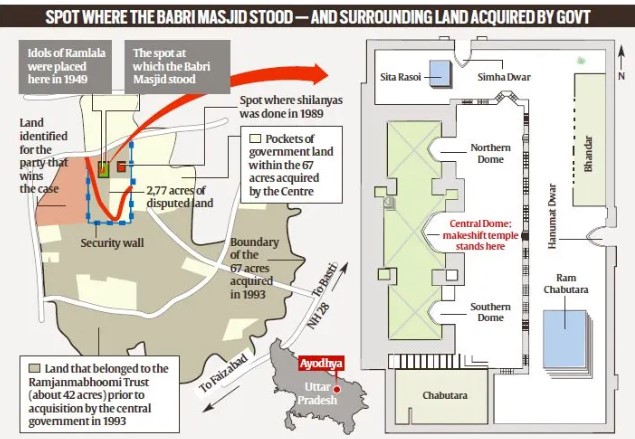
Construction of Ram Mandir: In August 2020, the Ram Janmabhoomi Teerth Kshetra Trust started building a ram temple. The first floor construction is ongoing as of January 2024, and the ground floor has already been completed. The whole project will be completed by 2025.
Mosque Allocation: For the construction of a new mosque, a 5acre plot land in Dhannipur Ayodhya was allocated by Uttar Pradesh government. Nevertheless, the Sunni Waqf Board did not accept the site yet as it is relatively far away from drama land and demanded a new place nearby Babri Masjid.
Social and Political Impacts: The decision of the Supreme Court prompted varied responses from Indian society. Although the building of Ram temple was a cause for celebration amongst Hindus, some Muslims were displeased with where their mosque site now stands and they have remained critical in relation to historical accounts as well as justice. This issue is a sensitive one, and parties employ it to demonstrate support.
Interfaith Dialogue Efforts: The ruling has given rise to a number of initiatives aimed at fostering interfaith dialogue and harmonious coexistence. Religious leaders from both groups have been united in addressing lingering divisions and promoting reconciliation. But there are considerable difficulties in overcoming the historical and emotional gaps.
As of January 2024:
- The Ram Mandir is being built but remains unfinished.
- The mosque problem still unresolved, however the Sunni Waqf Board does not accept this site allocation.
- However, social and political issues surrounding the controversy remain unchanged.
- There are ongoing interfaith dialogue attempts, but difficulties persist in closing historical wounds and establishing enduring harmony.
Ayodhaya Ram Mandir’s Glorious Opening

Consecration Ceremony: The grand consecration ceremony of the Ram Mandir was held on January 22nd, 2024, where Prime Minister Modi performed the ‘pranpratishtha’ ritual. Millions of people in India witnessed this historic moment which heralded a new age for the temple and Ayodhya.
Public Darshan: The temple is now accessible to visitors for “darshan”, where devotees from different parts of India can come and offer prayers. The first stage of darshan is being done in stages and with very strict security.
Ongoing Festivities: Celebrations on the occasion of the inauguration of the Ram Mandir have swept across the whole of India. Religion and culture continue to be celebrated in Ayodhya, attracting worshippers and travelers who want to experience the historic event.
Development Plans: The trust behind the Ram Mandir Trust has already announced plans for future development around the temple complex, including building pilgrimage facilities, museums, and related amenities. These initiatives are aimed at improving the visitor experience and strengthening Ayodhya as a leading pilgrimage destination.
Looking Ahead:
The Ayodhya dispute may have had its legal resolution but where politics and society are concerned it is still unfolding. Building a harmonious future in Ayodhya and beyond requires:
- Transparency and accountability: The past should not be shared in full public view, but the details including Liberhan Commission report can help healing and closure.
- Meaningful dialogue: Constant, authentic interfaith dialogue among all protagonists is an essential factor in resolving grievances and creating mutual understanding.
- Social justice and inclusivity: Creating social justice and inclusiveness for all religious groups is crucial in achieving a genuinely harmonious society.
- The Ayodhya saga gives us a strong lesson about how frail interfaith accord could be and the need to pursuit peacefully for complicated historical conflicts. By learning from the past, through honest debates and inclusiveness, India can come to a new future where Ayodhya’s echoes are based on more understanding and consensus.
Bear in mind that this is a dynamic situation, and changes may have to be made as the events unfold.
Related links
Here are some links to articles on the legal battles surrounding the Ayodhya Ram Mandir, spanning different points in time and perspectives:
Comprehensive Summaries:
- Wikipedia: Provides a detailed timeline of the legal battle, including key rulings and judgments: https://en.wikipedia.org/wiki/Ayodhya_dispute
- The Indian Express: Offers a concise overview of the legal history, with highlights of the major players and events: https://indianexpress.com/article/india/ram-mandir-ayodhya-babri-masjid-demolition-case-sequence-of-events-4970181/
- BBC News: Presents a neutral summary of the dispute, including its religious and political significance: https://www.bbc.co.uk/news/world-asia-india-67775166
Landmark Judgments:
- Supreme Court Judgement of 2019: Contains the full text of the landmark verdict that awarded the disputed land to the Ram Janmabhoomi Trust: https://www.sci.gov.in/pdf/JUD_2.pdf
- Allahabad High Court Judgement of 2010: Provides the earlier verdict which divided the land into three parts, later challenged in the Supreme Court: https://elegalix.allahabadhighcourt.in/elegalix/ayodhyafiles/honsukj.pdf
Additional Perspectives:
- Scroll.in: Explores the social and political impact of the legal battle, highlighting the voices of marginalized communities: https://scroll.in/topic/56226/ayodhya-verdict
- The Wire: Examines the long-term cultural and historical context of the dispute, focusing on the construction of religious identities: https://thewire.in/law/ayodhya-babri-masjid-case-settlement

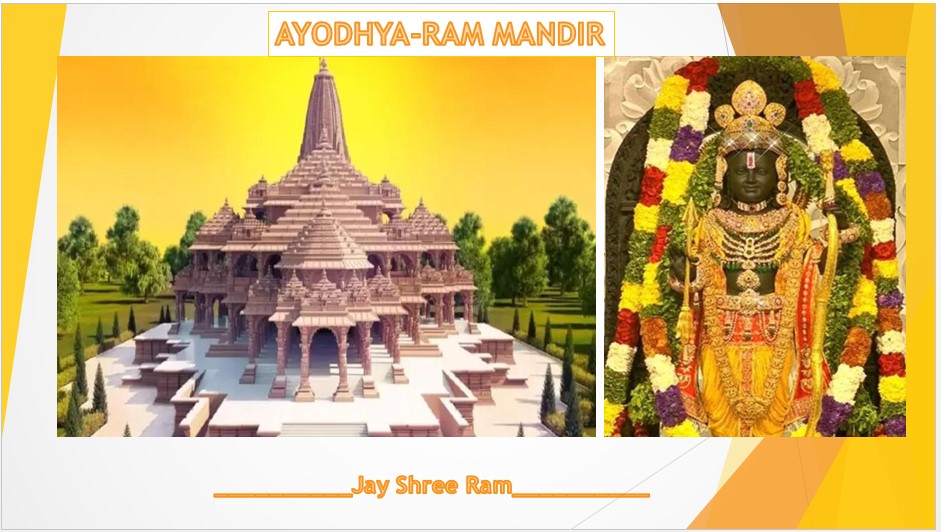
I’m really inspired together with your writing
abilities and also with the format to your weblog. Is this a paid topic or did
you customize it your self? Either way keep up the excellent quality writing, it’s uncommon to look a great blog like this
one nowadays..
thank you, i gathered data from google and customized it myself.
Wow Thanks for this thread i find it hard to stumble on excellent resources out there when it comes to this blog posts appreciate for the review website